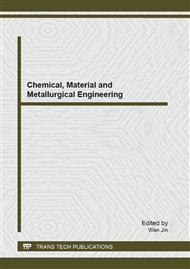[1]
K. J. Kim, J. S. Kim, B. I. Choi, K. H. Kim, H. H. Choi, C. W. Kim, K. W. Kang, J. H. Song, and C. W. Sung, Development of automotive engine cradle by hydroforming process, J. Mech. Sci. Technol. 21 (2007) 1523–1527.
DOI: 10.1007/bf03177369
Google Scholar
[2]
G. H. Majzoobi, F. Freshteh Saniee, and A. Shirazi, Prediction of failure in tube hydroforming process using a damage model, J. Mech. Sci. Technol. 21 (2007) 1512–1517.
DOI: 10.1007/bf03177367
Google Scholar
[3]
R. M. N. Jorge, R.A.F. Valente, A.P. Roque, M.P. Parente, and A.A. Fernandes, Numerical simulation of hydro-forming process involving a tubular blank with dissimilar thickness, Mater. Manuf. Process. 22 (2007) 286–291.
DOI: 10.1080/10426910601134195
Google Scholar
[4]
G.H. Faraji, R. Hashemi, R.M. Mashhadi, A.F. Dizaji, and V. Norouzifard, Hydro-forming limits in metal bellows forming process, Mater. Manuf. Process. 25 (2010) 1413–1417.
DOI: 10.1080/10426914.2010.499579
Google Scholar
[5]
J. Laeng, J.G. Stewart, and F.W. Liou, Laser metal forming processes for rapid prototyping - A review, Int. J. Prod. Res. 38 (200) 3973–3996.
DOI: 10.1080/00207540050176111
Google Scholar
[6]
B. Jurisevic, K. Kuzman, and K. Junkar, Water jetting technology: an alternative in incremental sheet metal forming, Int. J. Adv. Manuf. Technol. 31(2006) 18–23.
DOI: 10.1007/s00170-005-0176-9
Google Scholar
[7]
J. Jeswiet, F. Micari, G. Hirt, A. Bramley, J. Duflou, and J. Allwood, Asymmetric single point incremental forming of sheet metal, CIRP Ann. 54 (2005) 623–650.
DOI: 10.1016/s0007-8506(07)60021-3
Google Scholar
[8]
S. W. Kim, Y. S. Lee, S. H. Kang, and J. H. Lee, J. Mech. Sci. Technol. 21 (2007) 1518–1522.
Google Scholar
[9]
M. B. Silva, M. Skjoedt, P. Vilaça, N. Bay, and P. A. F. Martins, Single point incremental forming of tailored blanks produced by friction stir welding, J. Mater. Process. Technol. 209 (2008) 811–820.
DOI: 10.1016/j.jmatprotec.2008.02.057
Google Scholar
[10]
V. Franzen, L. Kwiatkowski, P.A.F. Martins, and A.E. Tekkaya, Single point incremental forming of PVC, Mater. Process. Technol. 209 (2008) 462–469.
DOI: 10.1016/j.jmatprotec.2008.02.013
Google Scholar
[11]
G. Hussain, L. Gao, N. Hayat, Z. Cui, Y.C. Pang, and N.U. Dar, Tool and lubricant for incremental forming of commercially pure titanium sheet, J. Mater. Process. Technol. 203 (2008) 193–201.
DOI: 10.1016/j.jmatprotec.2007.10.043
Google Scholar
[12]
G. Ambrogio, L. D. Napoli, L. Filice, F. Gagliardi, and M. Muzzupappa, Application of incremental forming process for highly customized medical product manufacturing, J. Mater. Process. Technol. 162–163 (2005) 156–162.
DOI: 10.1016/j.jmatprotec.2005.02.148
Google Scholar
[13]
C.C. Wong, T.A. Dean, and J. Lin, A review of spinning, shear forming and flow forming processes, İnt. J. Mach. Too. Manuf. 43 (2003) 1419–1435.
DOI: 10.1016/s0890-6955(03)00172-x
Google Scholar
[14]
H. Karbasian and A.E. Tekkaya, A review on hot stamping, J. Mater. Process. Technol. 210 (2010) 2103–2118.
DOI: 10.1016/j.jmatprotec.2010.07.019
Google Scholar
[15]
M. Ahmetoglu, T. Altan, Tube hydroforming: state–of–art and future trends, J. Mater. Process. Technol. 98 (2007) 25–33.
DOI: 10.1016/s0924-0136(99)00302-7
Google Scholar
[16]
G. Ambrogio, L. Filice, L.D. Napoli, and M. Muzzupappa, A simple approach for reducing profile diverting in single point incremental forming process, Proc. IMechE, Part B, J. Engrg. Manuf. 219 (2005) 823–830.
DOI: 10.1243/095440505x32797
Google Scholar
[17]
G. Ambrogio,V. Cozza, L. Filice, and F. Micari, An analytical model for improving precision in single point incremental forming, J. Mater. Process. Technol. 191(2007) 92–95.
DOI: 10.1016/j.jmatprotec.2007.03.079
Google Scholar
[18]
N. Otegi, L. Galdos, A. Sukia, A. Mentxaka, Optimization of geometrical accuracy of an industrial shape in single point incremental forming, in: Proceedings of 9th International Conference on Technology of Plasticity, Korea, (2008).
Google Scholar
[19]
M.J. Anderson and P.J. Whitcomb, RSM simplified: optimizing processes using response surface methods for design of experiments, Productive Publications Inc., (2004).
DOI: 10.4324/9781482293777
Google Scholar


